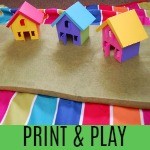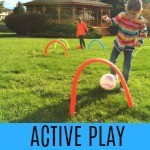These simple Spring science projects can be done whether there is snow still on the ground or if Spring has already sprung! These science projects are ready and waiting in your fridge and recycle bin. The kids will learn about plant growth, water movement, seed germination, and more! Here are three simple Spring science projects you can do with your kids.
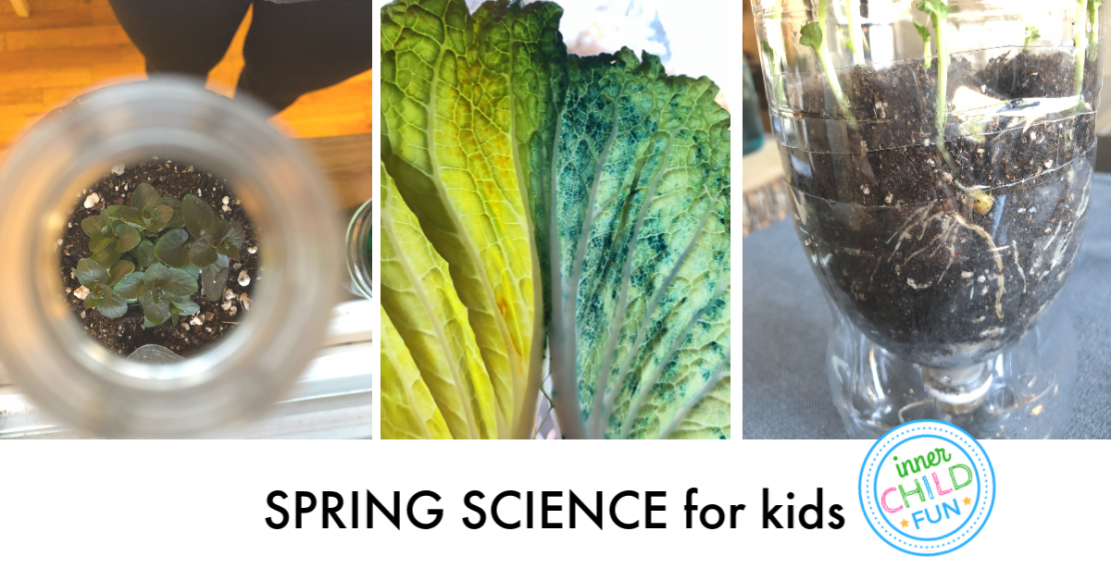
I don’t know about you, but I have a bad case of Spring fever. I want to get outside and play in the dirt and plant all the things, but I can’t yet. It’s getting closer. Next week is supposed to have a couple 70 degree days, but last week had snow. That forever end of Winter limbo. To get a jump on Spring, the kids and I decided to do some plant experiments indoors.
Simple Spring Science Projects – Greenhouse Sprouts
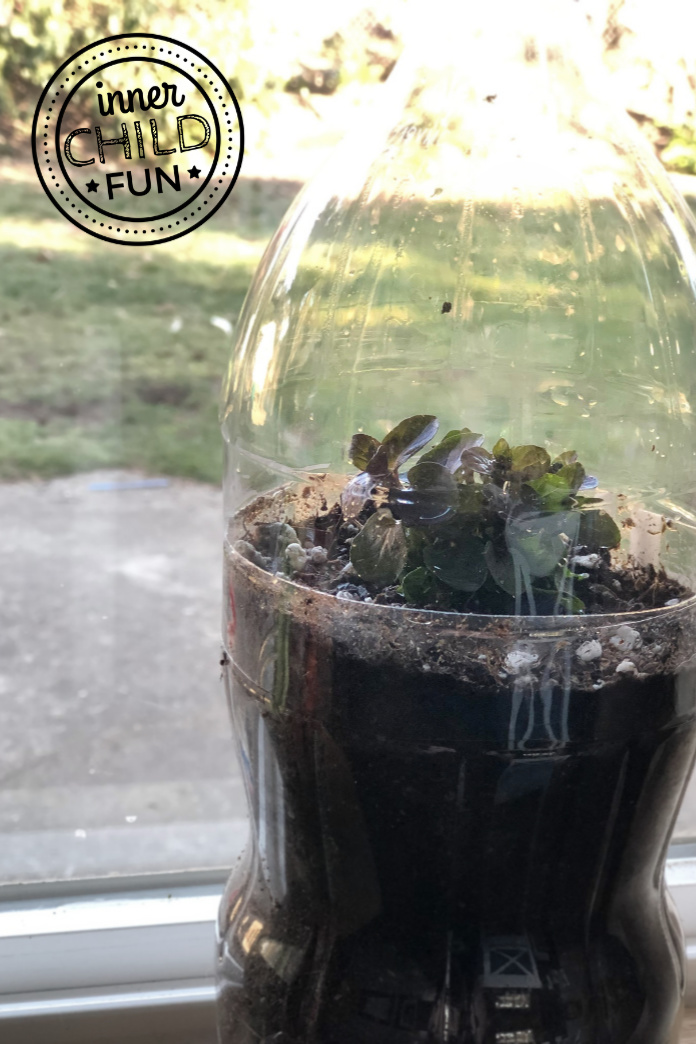
The first simple Spring science experiment we did was building a greenhouse out of recycled soda bottles. We cut a used soda bottle in

As soon as the seeds sprouted, we took off the soda bottle cap and it started to clear out a bit. The baby plant leaves smell amazing! I’ll be thrilled to have this plant somewhere in the yard, or, I could tie a ribbon around it and make it into a end of year teacher gift for someone.
Here’s the science: The clear plastic of the water bottle captures the warmth of the sun just like a greenhouse. When the soil is warm and moist, seeds germinate (sprout) faster. The bottles walls have condensation (water droplets) on them because the higher temperature makes the water evaporate from the soil, but it gets trapped by the bottle. This also helps the plant seeds sprout and grow faster.
Simple Spring Science Projects – Cabbage Water Movement
This simple Science project will work with both cabbage or celery. We started out by buying a head of Napa cabbage and selecting the best leaf we could find, then I split the stem with a knife up the center. We then stuck the two sides of the cabbage leaf into two different jars of colored water with food coloring in it. Like this:
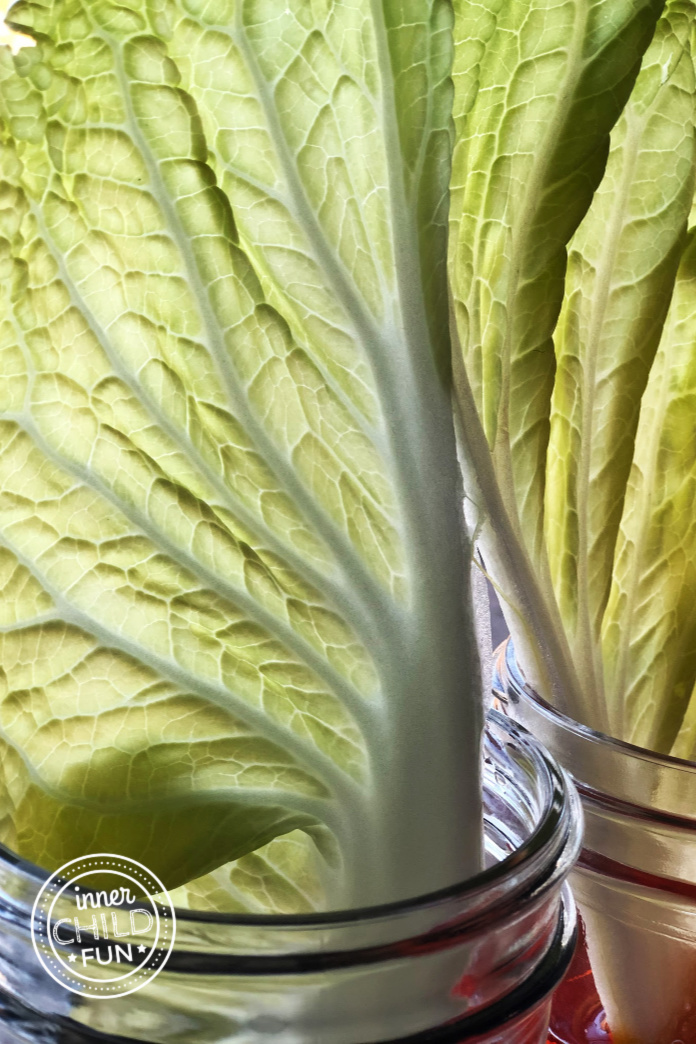
The cabbage was super fresh, so it soaked up the water really quickly and by the next morning we had a beautiful leaf that was colored differently on each side! Isn’t it beautiful? The orange is harder to see, but it is there. Pulled right into the plants with the water!
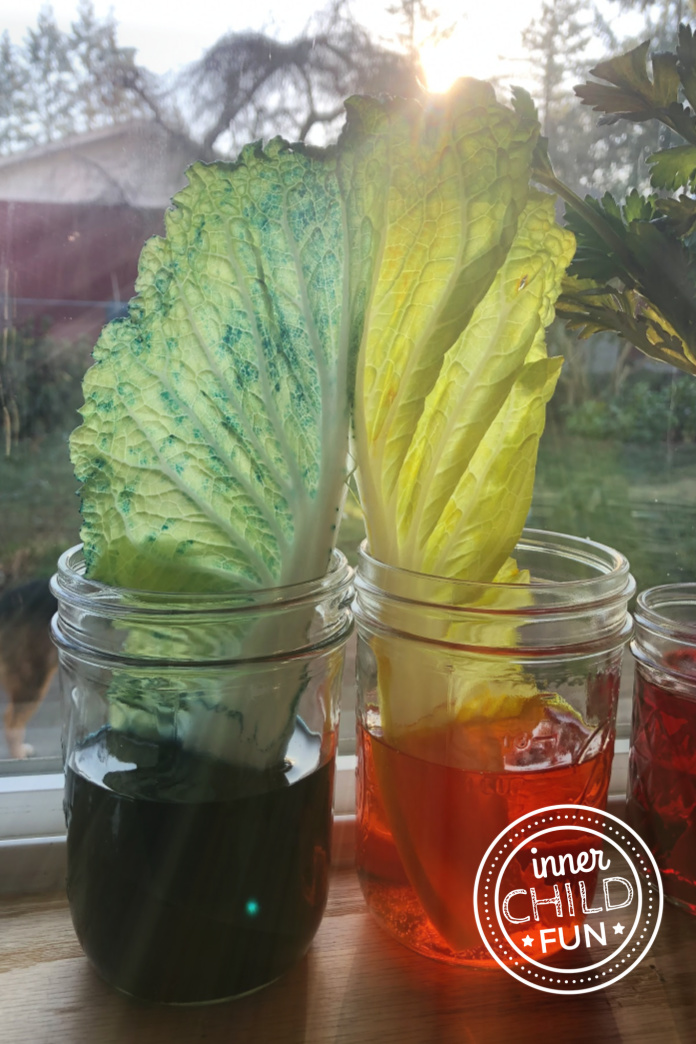
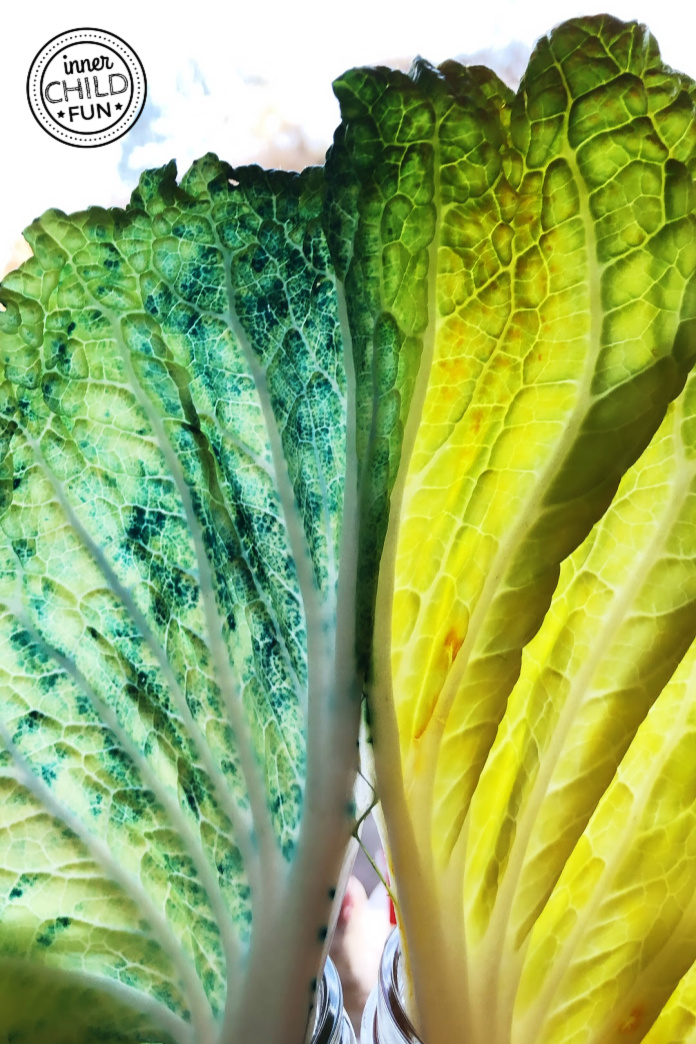
We also did the same thing with celery. The next morning we cut the celery open and xylem (the columns that carry the water to the leaves) had been dyed with the colored water!
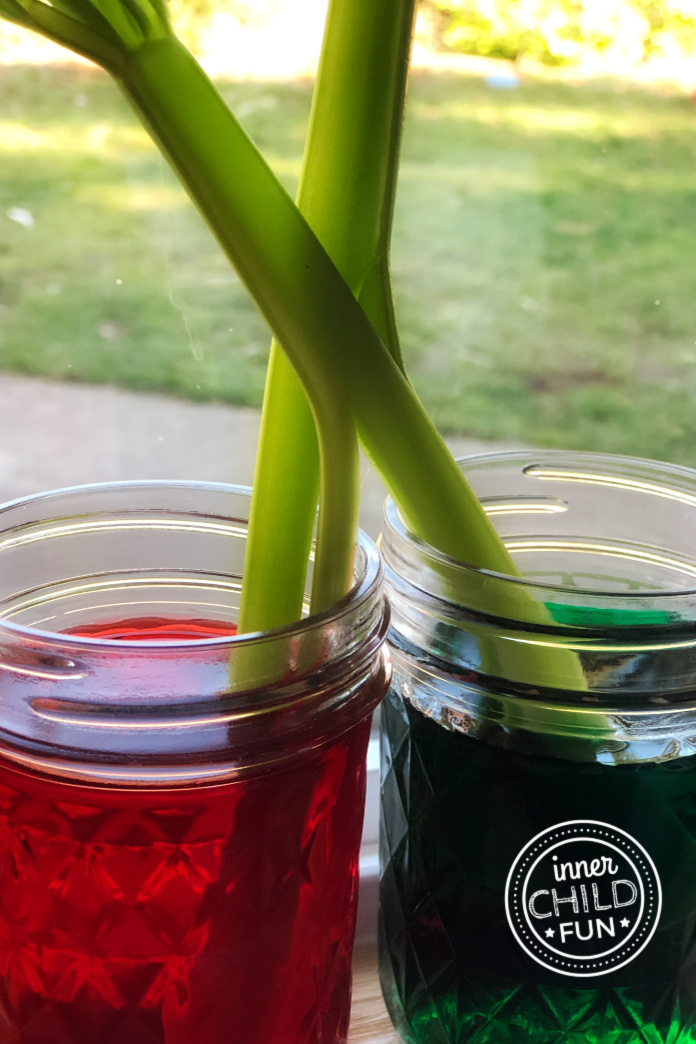
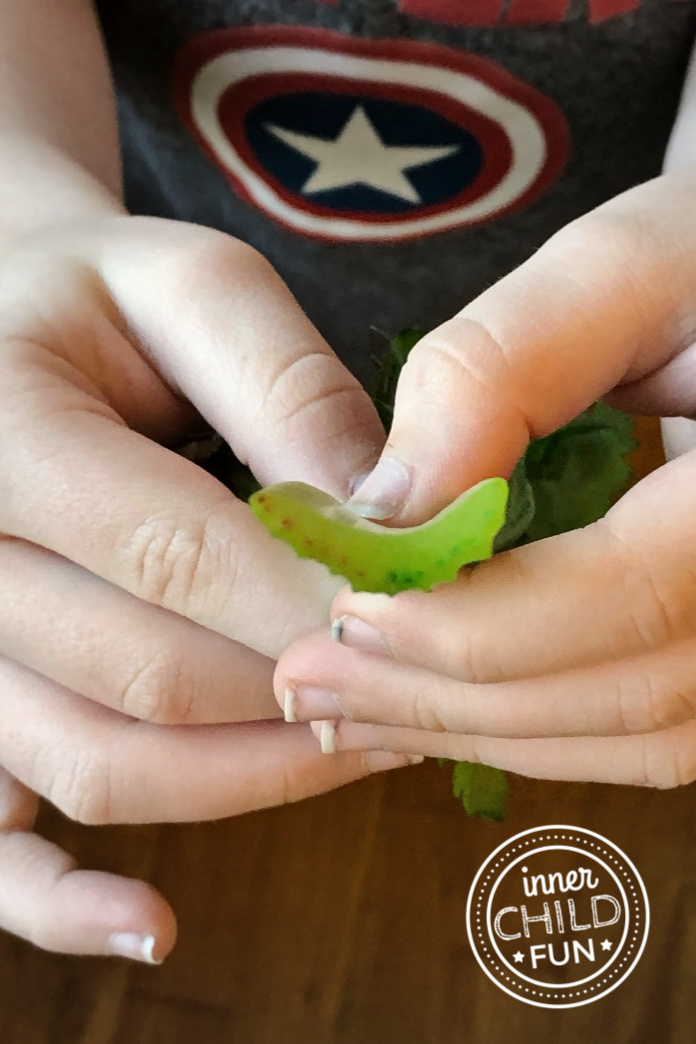
Here’s the science: Cabbage and celery have tubes, called xylem, in their stems. The xylem are tubes that carry water from the ground up to the leaves of the cabbage. But they don’t just carry water. They also help keep the plant fed with the nutrients in the soil. This process is called “Capillary action”. This action helps support the stems and leaves of the plant. It shows how chemicals can also be pulled into our food with the water. When the plants pull the colored water, the dye only colors the cells which the water is pulled to. Because we split the stem, one side of the stem sucked up orange water and the other sucked up blue water. The celery is a wonderful illustration of how the xylem move in the stem and the cabbage leaf is a perfect example of how that same water moves through the leaves!
Simple Spring Science Projects – Root Growth
For this one, we made another green house, but we planted pea seeds around the outside so we could watch underground as they sprouted. This one seemed like the most successful of all. We watched every day as the seeds grew tails, sprouted, pushed up out of the ground, and finally, reached the top of the bottle/green house to get to the fresh air!
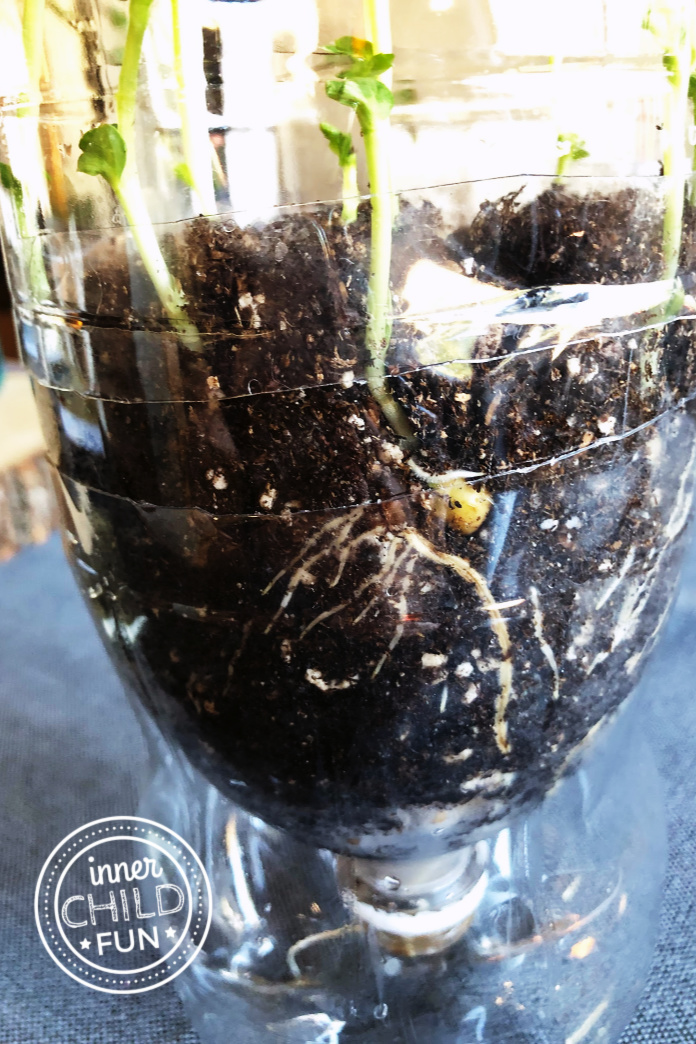
We used two soda bottle tops for this greenhouse because I wanted to be able to water from the bottom so I didn’t disturb the baby plants as they grew. It isn’t completely necessary, but it worked wonderfully!
Here’s the science: As a seed germinates (sprouts) it does a lot of work underground before pushing its green head out of the ground. Germination is the phase of plant growth when the seed begins to sprout. Seeds have a seed coat, which is a protective layer on the outside. This is broken down by water and then the baby plant can push out. Inside the seed there is a cotyledon, or a part that protects and provides food for the baby plant. As the baby plant pushes out of the seed, it develops roots, a stem, and leaves. It’s fun to see that in action with the clear walls of your greenhouse soda bottle.
More Simple Science Projects to Try:
- 5 Simple Experiments with Water – explore refraction, volume, surface tension and more!
- Bubble Science – make a square bubble, learn what happens when bubbles touch, and explore different shapes of bubble wands.
- Simple Kitchen Science Experiments – make a penny turn green, go fishing for ice, and create a glitter tornado!

